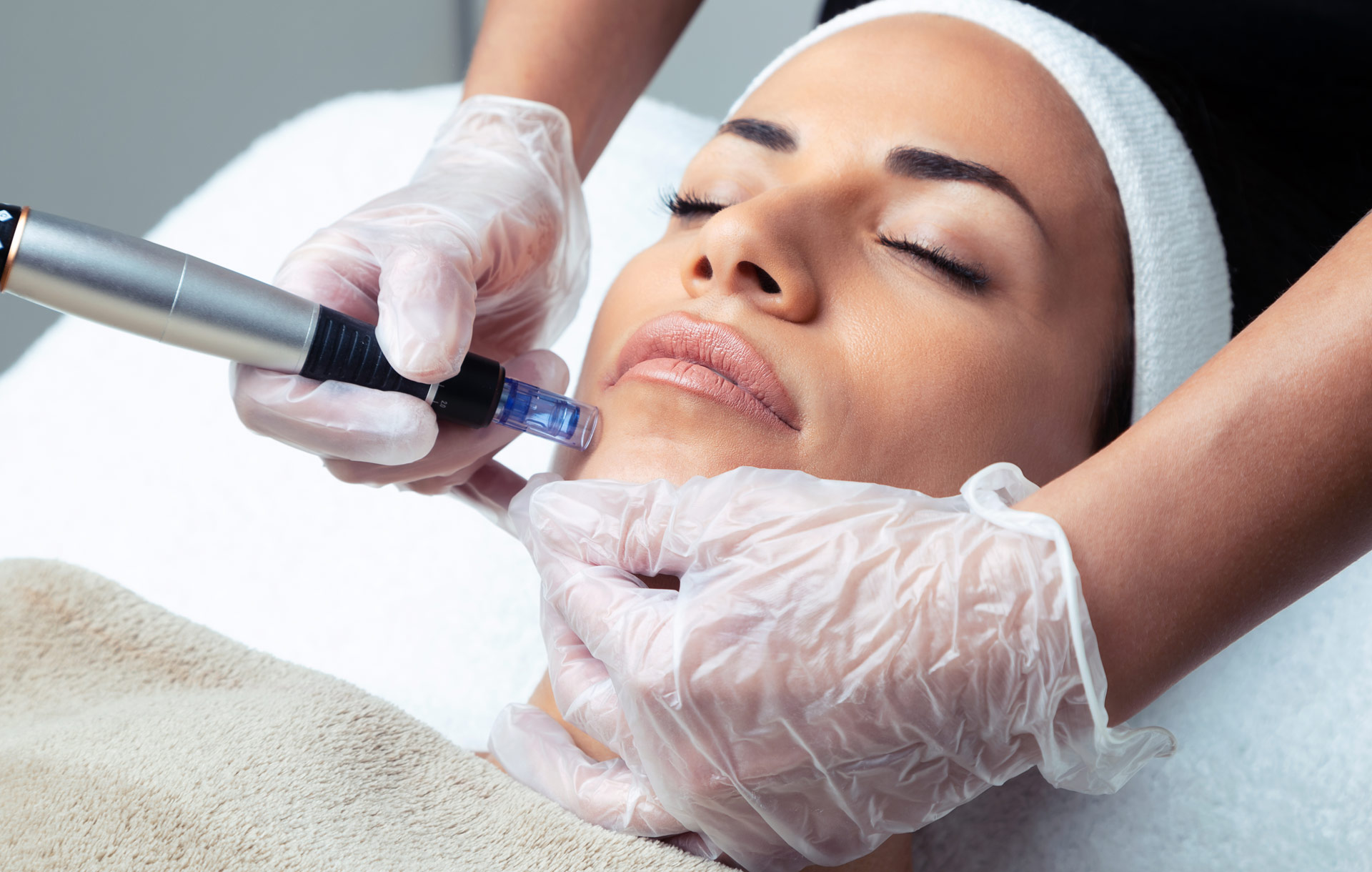
An in depth look at two popular exfoliation methods
Superficial microdermabrasion, often called the “the lunchtime peel”, is a widely known and accepted part of our skin care inventory. It is most commonly performed by estheticians in dermatology/plastic surgery offices, as well as in med spas. The “lunchtime peel” is precisely that-it is quick, with little recovery time. Several successive light microdermabrasion treatments can improve the appearance of brown pigmentation and the fine lines caused by aging and sun exposure.
Microdermabrasion is the perfect procedure to have before an important event, so that makeup glides on seamlessly. Microdermabrasion is the only procedure we allow brides/bridal parties to do the week before the wedding. But what if your client has acne or traumatic scars that are raised or pitted? And those permanently enlarged pores that run in the family? For these “deeper” problems, microneedling may be the answer. Microneedling is performed by physicians, physician assistants, RNs, NPs, or licensed paramedical aestheticians only.
Scars originate in the dermis, the second layer of the skin, and the microneedling must penetrate to this level for the treatment to be effective. There are various microneedling-rollers devices which have “needles” of varying sizes and lengths to customize each treatment according to individual patient needs. One can also customize the number of passes used on different areas, to maximize results while minimizing recovery.
Since this procedure is a superficial resurfacing technique that leaves patients with open, abraded skin, recovery of 4-5 days is required before makeup can be applied. Immediately after treatment, patients apply antibiotic cream (we like Polysporin® or Biafine® best) while the skin surface is healing, to prevent infection. Generally, as the top layer of dermis and the overlying epidermis regrow over the abraded areas, the pits, scars, and open pores assume a smother and flatter appearance.
Some patients, particularly those with darker skin types, may risk post-inflammatory hyperpigmentation (darkening of the skin) which is usually temporary and may be treated with topical skin lighteners and retinoid medications. Microneedling is not for everyone, and proper education is essential for anyone considering this procedure. It provides an intermediate way to resurface the face, chest or back, and can be more effective and longer-lasting than the lighter microdermabrasion, without as much recovery time as resurfacing lasers.
As with many other cosmetic skin procedures, the effects of this technique can be maintained by rigorous use of a good sunscreen and enhanced by continued use of topical retinoid and vitamin C AHA/BHA creams at home. While many people are happy with the “lunchtime peel”, microneedling may also be appropriate.
“Microdermabrasion is the perfect procedure to have before an important event, so that makeup glides on seamlessly.”
[ihc-hide-content ihc_mb_type=”show” ihc_mb_who=”2,4,5,6,7″ ihc_mb_template=”3″ ]
Down Deep with Microneedling
Scars from acne, pox or other skin conditions often leave their marks-unsightly scars-deep into the skin’s surface. If your client’s scars seem anchored in the lower levels of your skin, then they may need to take a more in-depth look at healing with microneedling.
Who conducts this procedure?
Microneedling should be done by a licensed paramedical aesthetician, RN, nurse practitioner, or physician assistant, all under the supervision of a physician. However, individual state laws may vary and can be accessed on any individual state Board of Medicine or Nursing website.
Can it fix any condition?
When Microneedling was first developed, it was used to improve deep acne scars, pox marks and other scars resulting from acne or disease. The conditions under which microneedling would not be effective include the presence of congenital skin defects, certain types of moles or pigmented birthmarks, and inflammatory skin conditions, such as rosacea or psoriasis.
What should a client expect before this procedure?
A complete medical history should be taken along with a careful examination to evaluate the client’s general health. The doctor should provide a preliminary explanation of the procedure and any possible risks and complications that could occur. Photos can be taken before and after the procedure to help evaluate the amount of improvement.
What takes place?
The provider will apply anesthetic cream to the treatment area for 15 minutes. It is then removed with a damp gauze or by washing with water. Then, the microneedler is “rolled” across the treatment area in a variety of directions and number of passes. The patient should only feel a mild “stinging” sensation, if anything, during the procedure. The provider will then apply a soothing healing cream to the treated area. More experienced providers may also take advantage of the tiny “channels” in the skin caused by the microneedles to give the patient various high grade skin serums with growth factor/retinoids/vitamins, which will penetrate more effectively while skin is healing and therefore enhance the overall final result.
Afterwards, the skin may feel like it has been moderately sunburned. Complete healing usually occurs within 5 to 7 days. The newly formed skin, which is pink at first, gradually develops a normal appearance. Makeup can be used 2 days afterward. Generally, most people can resume their normal activity in 7 to 10 days after the procedure.
Patients are instructed to avoid unnecessary direct sunlight for 1 month after the procedure and to use a sunscreen on a regular basis.
[/ihc-hide-content]












